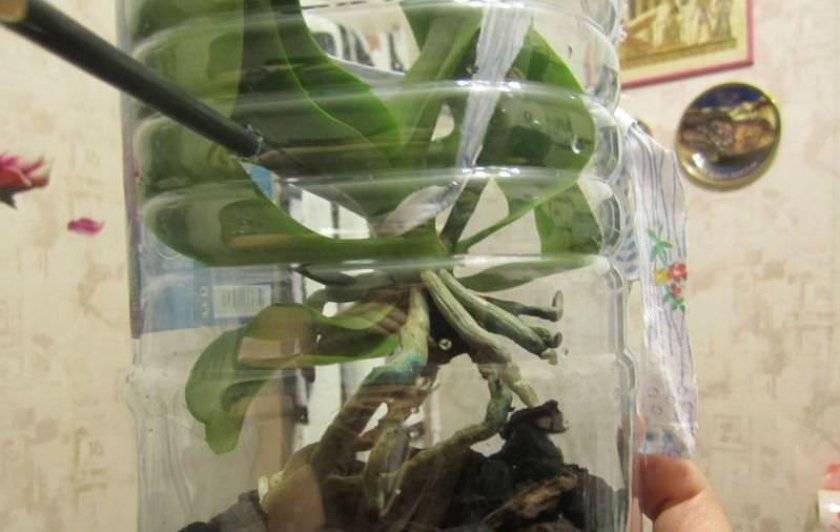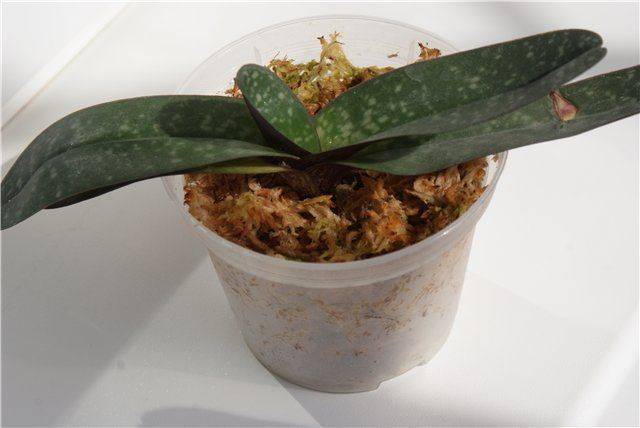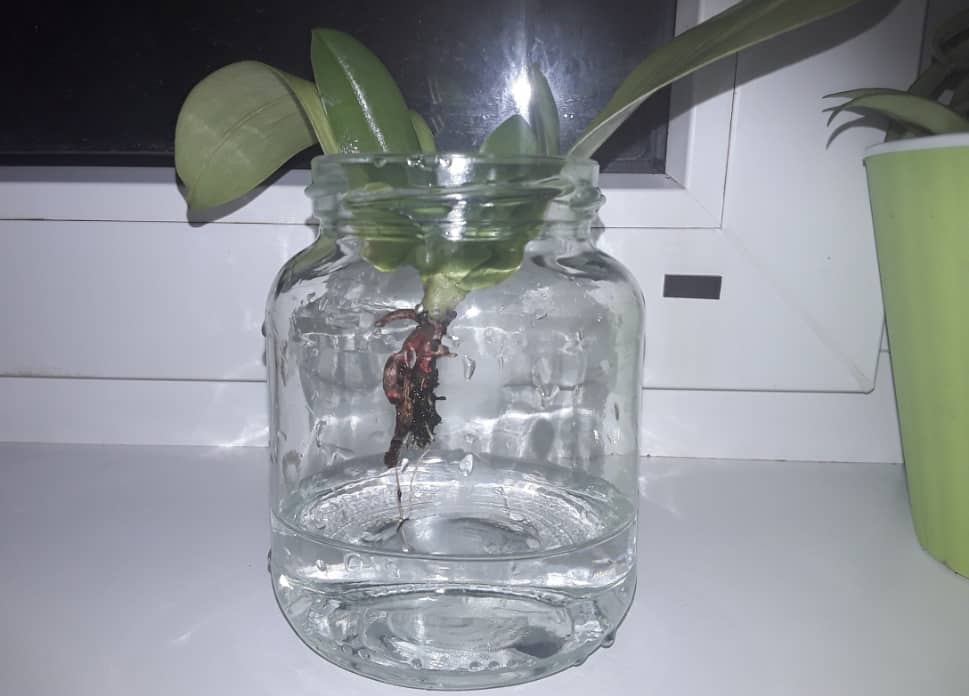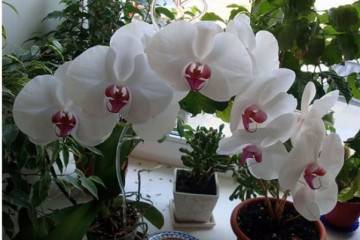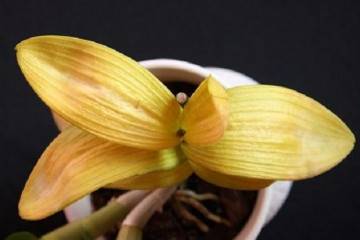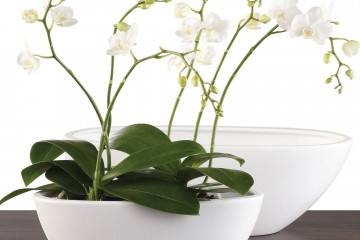How to grow roots in an Orchid at home
Content:
Delicate and graceful orchid, with improper care, begins to ache and lose roots. The root system may begin to rot or, conversely, dry out. In such situations, the plant needs immediate help in order to restore its full existence.
Causes of orchid root problems
Roots rot only in plants at home. In the wild, there is constant airflow and regular airflow. In the room, the ventilation is much worse, and the humidity is lower.
The roots of a healthy flower are light green. The affected root system is dark, often brown. In addition to discoloration, it can become wet and soft. It is these conditions that contribute to the emergence of microorganisms that cause various diseases in plants.
In addition, root damage results in:
- Abundant watering. If the soil of the orchid is very moistened, then the plant will not be able to receive oxygen in sufficient quantities.
- Deficiency of sunlight, which leads to disruption of photosynthesis.
- Dense or poor quality substrate.
- A small pot that prevents the normal development of grown roots.
- Overheating or hypothermia. The main condition for flowering orchids is the air temperature from +16 ºC to +30 ºC.
Flower resuscitation
The first step is to carefully examine the diseased plant. If root rot is found, first aid should be given, ridding the flower of decaying places and affected roots.
There are several methods of resuscitation, but before that it is necessary:
- Gently remove the orchid from the pot.
- Remove soil, rinse the root system under warm water.
- Using a sharp knife, carefully remove all rot, leaving only a healthy root.
- Decontaminate all sections with cinnamon or activated carbon. The plant will take 24 hours to dry completely.
Leaves should not be removed from orchids, even if they are lethargic and dry. But it is better to tear off the flowering shoots, since the plant spends a lot of energy on them.
Phalaenopsis needs a lot of light to successfully grow roots. A phytolamp will help to create artificial lighting, due to which growth is optimized.
How can you help an orchid grow roots? There are several methods.
Growing up in the greenhouse
A greenhouse is the most effective and quickest method for restoring a tropical plant. In the role of a greenhouse, you can use both a ready-made version and any home-made improvised material (unnecessary aquarium, plastic or glass container).
The following layers must be placed in the selected container:
- expanded clay, which is a drainage;
- moistened sphagnum moss.
Place the diseased phalaenopsis so that the base is in the moss. The greenhouse should be covered and left in a bright place, excluding direct sunlight. It will be possible to remove the plant from the greenhouse and plant it in a pot when the fresh root reaches 5 cm.
Resuscitation in sphagnum moss
Sphagnum moss will also help to grow the root system of the orchid.It is sphagnum moss that is able to absorb water with its entire surface and keep it for a long time. It retains heat and allows air to pass through the affected orchid.
Moss moisture control is required. An excellent indicator - when the moss is squeezed, there is no dripping moisture in the palm of your hand. Before use, moss should be doused with boiling water for disinfection.
The following scheme will help to revive the flower:
- An orchid drain should be placed in a plastic container.
- Lay moss in the next layer.
- Place the damaged orchid in the moss so that it does not wobble.
- Drizzle with a spray bottle.
The only drawback of this method is that growing roots takes a long period of time. The root system will begin to grow only after a month, or even two. A plant transplant is possible in six months.
Resuscitation of a plant in water
How to root an orchid with water.
Base in water
The first option is that the supporting part of the flower should be lowered into the water. You only need to use settled water. The diseased plant is placed in a very bright place. The water should be changed once a week.
It is very difficult for an orchid to grow roots with this method. Constant monitoring of her condition is necessary. The flower can rot, and if it survives, it can be difficult to root in the substrate.
Leaves in the water
The second option is upside down. Orchid leaves need to be connected in a bunch and carefully submerged in water. In this case, only 1/3 of the leaves should be under water. The roots remain in the air. Warm water is sprayed onto the top from a spray bottle every day. The first roots can come out in a month, or even one and a half.
Crushed activated carbon must be added to the water in which the leaves of the plant are dipped.
Alternating soaking and drying
You can restore the health of the flower with the third option, with the help of soaking, which is replaced by drying. For this, a container is selected, the bottom of which should not reach the roots of the orchid. Every day, the container is filled with water so that only the roots of the plant are in the water. Pour the water overnight, leaving the orchid in an empty container. The next morning, repeat the procedure.
Glucose, sugar or honey should be added to the water. (1 teaspoon for 1 liter of water).
Tree bark treatment
Growing roots on the bark is quite rare, since the orchid needs optimal air humidity, and the air at home is often dry.
If pine bark was not bought in a specialized store, it should be disinfected by boiling it in water for one hour. After the bark has cooled, you can carefully place a diseased orchid on it.
While the roots grow, the plant does not need to be watered. The moisture contained in the bark is enough.
The use of drugs
Special means can help save an injured orchid. Most popular:
- "Fitosporin" - will provide protection against fungi and bacteria. It has low toxicity, so its use is not dangerous at home.
- Ribav Extra is a drug that stimulates rooting and germination.
- Succinic acid is an ideal food for orchids.
- Radifarm is an effective tool for accelerating the growth of new roots.
- "Zircon" is an immunomodulator and root former. Improves the metabolism of plants.
- "Kornevin" is a root formation stimulant.
Rescue a flower without roots
Even if the orchid remains completely without roots, but only with a stem and leaves, there is a chance for its salvation. The plant is restored in water.
All sore spots must be cut off and treated with an antiseptic. Then place in warm, settled water.The container with the plant is installed in a well-lit place, without direct sunlight. As the water evaporates, it is added.
Subject to all the rules, the flower will not die, but its regeneration will take place. In a month, the orchid will grow the first roots, after which it must be cut off and the baby transplanted into a pot. Subsequent recovery is best done in sphagnum moss.
It is quite possible to revive the flower and make the roots grow back. You just need to see the problem in a timely manner and create comfortable conditions for the plant. With a little patience and effort, the orchid will look great again, bloom and smell, and feel completely healthy.

